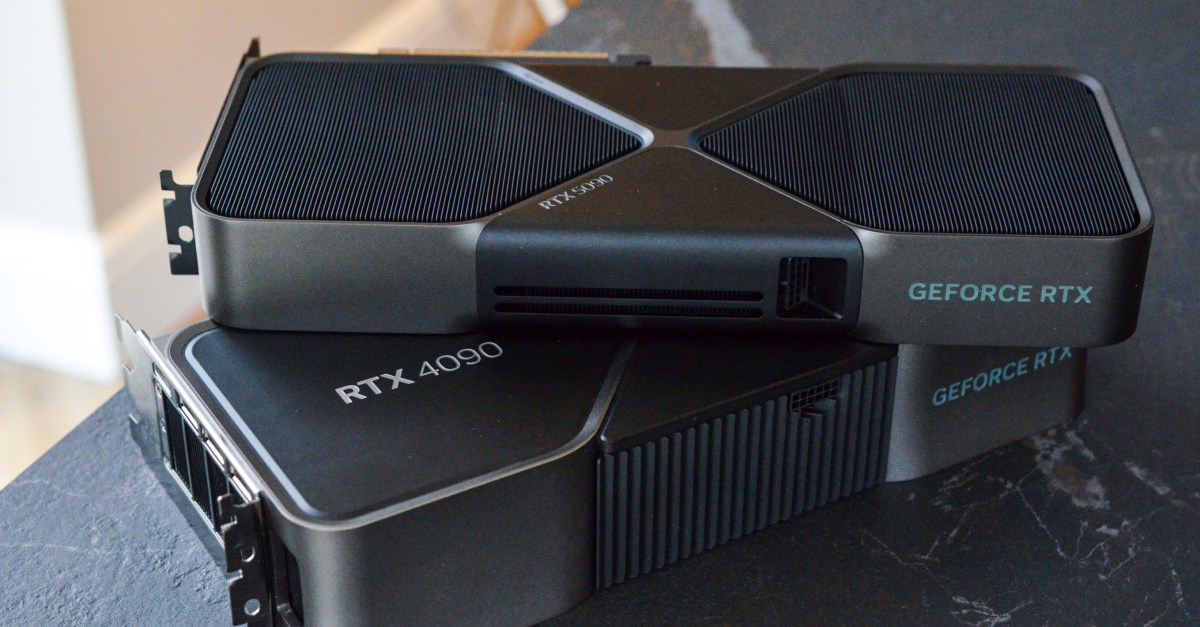Nvidia Unveils Surprising Manufacturing Challenges for RTX 5090 and 5070 Ti
Nvidia’s recent announcement regarding the unexpected manufacturing challenges for its latest graphics cards, the RTX 5090 and 5070 Ti, has sent ripples through the tech community and gaming industry. As the demand for high-performance graphics cards continues to soar, the implications of these production hurdles raise vital questions about supply chain resilience, market dynamics, and the future of gaming technology. This article delves deep into the nuances of Nvidia’s situation, exploring the reasons behind these challenges, their potential impact on the market, and what consumers can expect moving forward.
Understanding the Manufacturing Challenges
The manufacturing challenges faced by Nvidia for the RTX 5090 and 5070 Ti are multifaceted. Industry insiders have indicated that these hurdles stem from a combination of supply chain disruptions, component shortages, and the complexities involved in the production of cutting-edge technology.
- Component Shortages: The global semiconductor shortage has been a persistent issue since 2020. Even as the situation shows signs of improvement, specific components critical to the RTX 5090 and 5070 Ti are still in limited supply.
- Supply Chain Disruptions: Ongoing geopolitical tensions and COVID-19-related disruptions have strained logistics worldwide, making it harder for manufacturers like Nvidia to secure the necessary materials on time.
- Technological Complexity: The RTX 5090 and 5070 Ti are designed with advanced architectures that require intricate production processes. These complexities can lead to delays and quality control issues.
As Nvidia navigates these challenges, it becomes clear that the company’s capacity to innovate is being tested not just by competition but also by external market forces.
Market Impact: Availability and Pricing Concerns
The announcement of these manufacturing challenges has significant implications for the GPU market. Analysts are closely monitoring how these issues will affect the availability and pricing of the RTX 5090 and 5070 Ti. Here are some potential outcomes:
- Increased Prices: As supply diminishes amid high demand, it’s likely that prices will increase. Graphics cards have historically seen inflated prices during shortages, and this situation may be no different.
- Delayed Launches: Nvidia may need to postpone the release dates for the RTX 5090 and 5070 Ti, which could impact consumers eager to upgrade their systems.
- Market Competition: This situation could create opportunities for competitors like AMD or Intel to capture market share, particularly if they can roll out their products without similar interruptions.
These factors will not only impact Nvidia’s bottom line but also influence consumer behavior and purchasing decisions in the gaming community.
Consumer Sentiment and Expectations
For gamers and tech enthusiasts, the news of manufacturing challenges raises a myriad of emotions—from disappointment to concern. Many consumers have been eagerly awaiting the release of the RTX 5090 and 5070 Ti, anticipating significant advancements in graphics performance, ray tracing capabilities, and overall gaming experiences.
However, with the potential for increased prices and delayed availability, consumer sentiment may shift. Gamers may begin to consider alternative options or hold off on upgrades until the market stabilizes. This could lead to:
- Increased Interest in Older Models: Existing models like the RTX 4080 and 4070 Ti may see a surge in demand as consumers seek reliable alternatives.
- Adoption of Budget-Friendly Solutions: Gamers on a budget may opt for mid-range cards or even explore AMD’s offerings, which could lead to a more competitive landscape.
Nvidia’s Response: Strategies Moving Forward
In light of these manufacturing challenges, Nvidia is likely to implement several strategies to mitigate the impact on their product lineup:
- Supply Chain Optimization: The company may explore new partnerships and supply chain strategies to secure critical components more effectively.
- Enhanced Production Techniques: Investing in advanced production technologies could help Nvidia improve efficiency and reduce the time it takes to bring new products to market.
- Transparent Communication: Maintaining open lines of communication with consumers and retailers about availability and pricing will be crucial in managing expectations.
By proactively addressing these issues, Nvidia can strengthen its position in the market and reassure consumers about its commitment to delivering high-quality products.
The Bigger Picture: Supply Chain Resilience in Tech
The challenges faced by Nvidia are not isolated incidents; they reflect broader issues within the tech industry’s supply chain. The COVID-19 pandemic has revealed vulnerabilities in global supply chains, prompting many companies to reassess their operations. Here are some key takeaways:
- Diversification of Suppliers: Companies are increasingly looking to diversify their supplier base to reduce reliance on single sources for critical components.
- Investment in Local Manufacturing: Some tech firms are considering shifting parts of their production closer to home to mitigate transportation disruptions.
- Emphasis on Sustainability: The push for sustainable practices is influencing how companies approach manufacturing and procurement, with an eye toward long-term resilience.
As Nvidia navigates its current challenges, it will also be contributing to the broader conversation about supply chain resilience and the future of technology manufacturing.
Conclusion: A Path Forward
Nvidia’s unveiling of surprising manufacturing challenges for its RTX 5090 and 5070 Ti is a critical moment for the company and the broader tech industry. While these hurdles present obstacles, they also offer opportunities for innovation and growth. By tackling supply chain issues head-on and adapting to the evolving market landscape, Nvidia can emerge stronger and more resilient. For consumers, staying informed and patient will be key as the company works to bring its latest advancements to market.
In the end, the future of graphics technology remains bright, and with the right strategies in place, Nvidia can continue to lead the charge in delivering cutting-edge performance to gamers and creators alike.
See more Future Tech Daily

